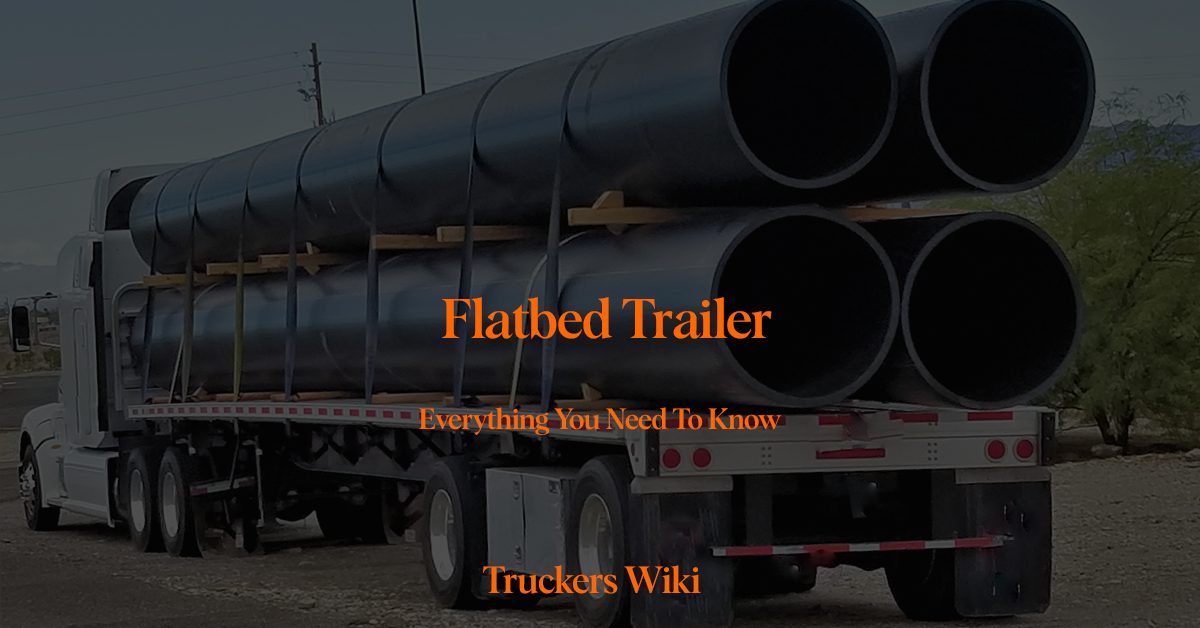
Table of Contents
What is a Flatbed Trailer
Flatbed trailer is a type of open trailer with a flat, level ‘bed’ with no sides or roof, which is used for transporting heavy or oversized loads, as well as loads that require loading and unloading from the sides or above.
Here’s what you need to know as a truck driver about flatbed trailers.
Dimensions
The standard dimensions for are typically 48 feet long and 8.5 feet wide, but 53-foot trailers are also common. The legal height limit for loads is 8.5 feet, but lowboy flatbeds can carry loads up to 12 feet high.
Types of Loads
Flatbed trailers are versatile and can carry a wide range of cargo, including heavy machinery, large equipment, construction materials, lumber, steel coils, and even vehicles.
Loading and Unloading
It can be loaded from the top, sides, or rear, which makes them ideal for bulky or oddly-shaped loads. However, this process can be more time-consuming and requires more physical labor compared to dry van or reefer trailers.
Securing Cargo
Because the cargo is exposed, it’s crucial to secure it properly to prevent it from shifting or falling off during transit. This often involves using chains, straps, and tarps. Drivers need to be knowledgeable about proper load securement procedures and regulations set forth by the Federal Motor Carrier Safety Administration (FMCSA).
Learn about Cargo Straps here.
Tarps
Many loads need to be covered with tarps to protect them from weather and road debris. Handling tarps can be physically demanding, as they can be heavy and awkward to position. Video about tarping at the end of this article.
Learn more about Tarp here.
Learn about Tarp Straps here.
Safety
Flatbed driving can be more hazardous compared to other types of trucking. There is a risk of falling from the trailer deck while loading or securing cargo, and shifting loads can cause balance issues while driving. It’s important to use personal protective equipment and follow safety protocols at all times.
Training and Skills
Drivers usually require additional training in load securement and handling, as well as a good understanding of weight distribution and balance.
Weather Impact
Since flatbed loads are often exposed to the elements, weather can play a bigger role in their operations. Rain, snow, and wind can all affect load securement and safety.
Inspections
Drivers must regularly inspect the load to ensure it’s still secure. The FMCSA requires that drivers inspect their cargo within the first 50 miles after beginning a trip, and then every 150 miles or every 3 hours, whichever comes first.
Pay
Flatbed drivers often earn more than a dry van or reefer drivers, in part due to the additional skills required and the physical demands of the job.
Remember, operating a flatbed trailer comes with its own set of challenges and responsibilities. Always prioritize safety, and ensure you’re trained and comfortable with all aspects of flatbed operations before taking on a flatbed job.
Now that you know what is a flatbed trailer, here is a video about tarping by driven trucking.
Learn about Conestoga trailer here.
To learn more about the types of trailers used in the trucking industry click here.
Listen to The Article
Audio Article flatbed flatbed trailer trailer what is
Last modified: February 5, 2024

